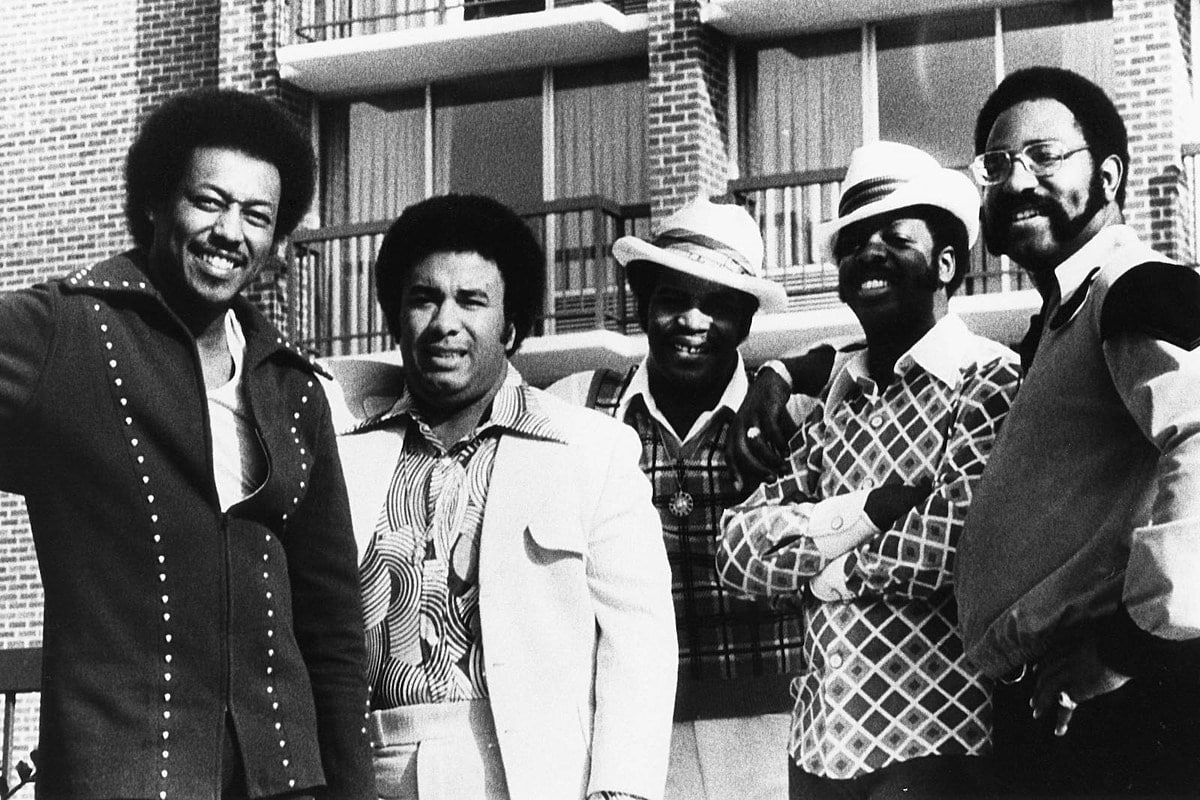
*The Spinners are finally getting their flowers from the Rock and Roll Hall of Fame, and “it’s a shame” that it has taken this long.
With timeless classics like “It’s a Shame,” I’ll Be Around,” Rubberband Man,” and “Mighty Love,” the Michigan-based quintet will enter the Hall alongside fellow honorees Missy Elliott, Willie Nelson, Sheryl Crow, Kate Bush, Rage Against the Machine, George Michael, DJ Kool Herc, Linc Wray, Chaka Khan, Bernie Taupin, Al Kooper and Don Cornelius.
The Spinners, named after the spinner chrome hubcap on group member Bobbie Smith’s Cadillac when they formed in 1955, even appeared to get lost among their fellow inductees following the announcement this week, so we are singling out the soul legends with a nostalgic dive into some of their monster hits.
OTHER NEWS ON EURWEB: Jesse Williams’ L.A. Car Crash Lawsuit Dropped
It’s a Shame
From the 1970 album “2nd Time Around” on Motown’s V.I.P. Records label
Produced and co-written by Stevie Wonder
The Spinners were on Motown from 1963 to 1972, smack dab in the middle of its heyday, but they were largely neglected by head honcho Berry Gordy. He acquired the group after buying their original label, Tri-Phi, and reportedly had them doing odd jobs around the building, like driving around The Jackson 5. Original members Smith, Pervis Jackson, Henry Fambrough, Billy Henderson and lead vocalist G.C. Cameron recorded “It’s a Shame” in 1970. It was written by Motown’s resident lyrical wizard, Stevie Wonder, alongside his collaborators Lee Garrett and Syreeta Wright, whom he also married in 1970. (They divorced 2 years later.) Written about a man complaining of his woman’s philandering, the song reached No. 14 on the Billboard Hot 100, and No. 3 on the R&B singles chart. “It’s a Shame” is the first song Wonder produced for another act by himself, and the lone hit for The Spinners in their 9-year stint at Motown. The song was also famously reworked by Monie Love in her 1990 hit, “It’s a Shame (My Sister).”
Largely ignored at Motown, The Spinners left in 1972 to sign with Atlantic Records, where their career was nearly cut short before it skyrocketed. The label placed the group with producer Jimmy Roach, who recorded four songs with them that went nowhere. Executives were considering dropping The Spinners to cut their losses, but Atlantic had just started working with Philadelphia producer Thom Bell, who had backed The Spinners on piano during one of their Philly gigs back in the day. Bell asked Atlantic for a shot with The Spinners, and the rest is history.
I’ll Be Around
From the 1972 album Spinners on Atlantic Records
Produced by Thom Bell, written by Phil Hurtt
Bell said he knew exactly what to do with the group’s vocal blend and paired them with Sigma Sound Studios house band MFSB on all of their records. For their first session, Bell had written the melody and title “I’ll Be Around,” but the song had no lyrics. His usual writing partner, Linda Creed, was out of town. So Bell called his old high school buddy Phil Hurtt, and requested that he write lyrics to the existing “I’ll Be Around” title and melody. Atlantic put the finished product on the B-side of “How Could I Let You Get Away,” also cut with Bell. But radio DJs had other ideas and started playing “I’ll Be Around” instead. The song became a hit, causing Atlantic to make it the A-side on future pressings. In the fall of 1972, it became The Spinners’ first No. 1 hit on the R&B Singles chart, where it spent a total of five weeks. It also reached No. 3 on the Pop Singles chart and went on to sell over one million copies.
Could It Be I’m Falling In Love
From the 1972 album Spinners
Produced by Thom Bell, written by twin brothers Melvin and Mervin Steals (aka “Mystro and Lyric”)
Mystro and Lyric pitched “Could It Be I’m Falling In Love” to Bell. Bobbie Smith sang lead on the track about the feeling you get when a new boo has your priorities suddenly changing. New band member, Philippé Wynn, who replaced G.C. Cameron when he decided to stay at Motown, ad-libs those infamous shouts of ecstasy at the song’s end. Also, Bell thought the rhythm was a bit tricky, and reportedly included a steady conga beat played by house musician Larry Washington, to help listeners keep the beat. Bell also added female background singers because he felt male vocal groups could sometimes sound muddy on the final mix. “Could It Be I’m Falling in Love” would equal the success of “I’ll Be Around,” peaking at No. 1 on the R&B Singles chart and No. 4 on the Billboard Pop Singles chart. It sold over one million copies.
Below, a lip-sync of “Could It Be I’m Falling In Love” with women singing the chorus, followed by a live version with The Spinners singing the chorus.
Mighty Love
From the 1974 album Mighty Love
Produced by Thom Bell, written by Joseph B. Jefferson, Bruce Hawes and Charles Simmons
Songwriters Jefferson, Hawes and Simmons write about a couple who think they’ll be together forever, but split up when they get older. Bobbie Smith and Philippé Wynne tag-team lead vocals during the song’s first half, but Wynne takes over for the final two and a half minutes of the song’s album version, which runs 4:58. This title track was released as a lead single in two parts. “Mighty Love – Pt.1” (the 3:14 A-side) held the number one spot on the R&B Singles chart for two weeks in March 1974, and peaked at No. 20 on the Pop Singles chart. “Mighty Love – Pt. 2” (the 2:37 B-side), was Wynne mostly professing his mighty love. Watch below:
The Rubberband Man
From the 1976 album Spinning Gold
Produced by Thom Bell, written by Thom Bell and Linda Creed
Rubbery bass by Bob Babbitt
Thom Bell wrote this song for his son when he was teased at school for being overweight. The song was originally called “The Fat Man,” because that’s what the bullies called his son. Bell wanted to flip the insult to mean something positive and empowering. With an assist from his writing partner Linda Creed, the song eventually evolved into “The Rubberband Man” and refers to that dude who knows all the dance moves, takes over any room with his presence and makes music with a rubber band stretched between his toes. That sound is represented in the song’s bass line, played by Bob Babbitt and run through a “funk box.”
Meanwhile, Wynne left the group in 1977 to launch a solo career that never quite took off. But he began working with Parliament-Funkadelic in 1979, performing with them in concert and joining them on the Funkadelic track, “(Not Just) Knee Deep.”
We Publish News 24/7. Don’t Miss A Story. Click HERE to SUBSCRIBE to Our Newsletter Now!





